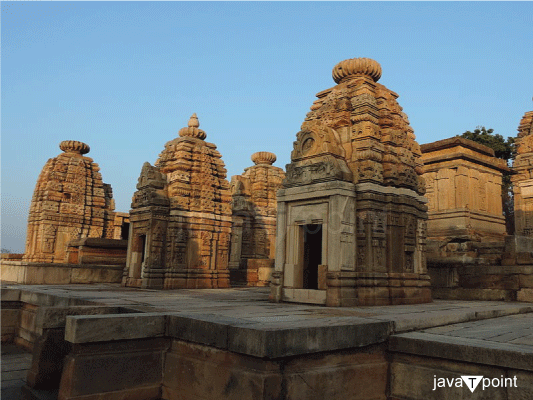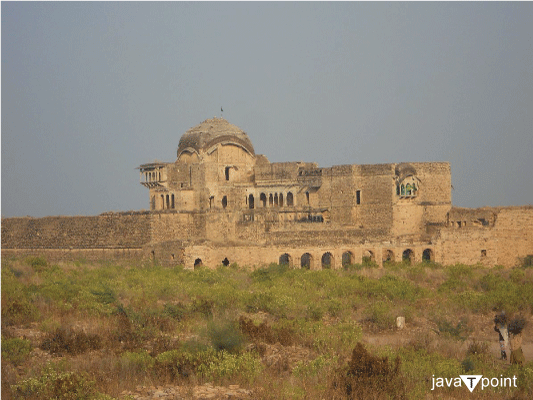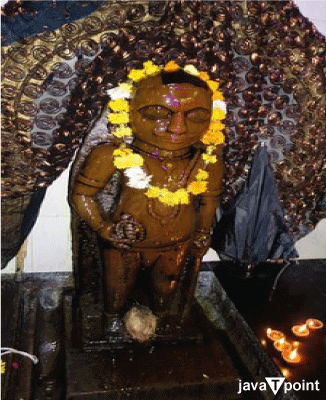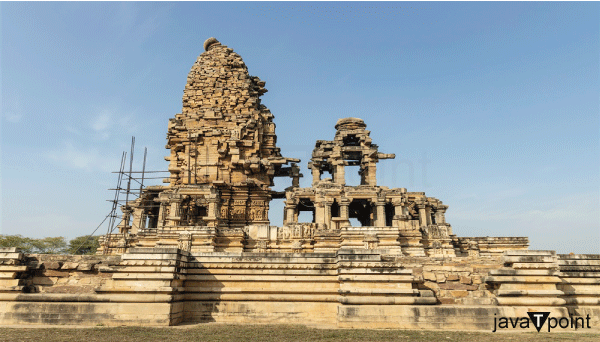5 Best Tourist Places in MorenaThe Morena district's administrative center is located in the Indian state of Madhya Pradesh. A municipal corporation is in charge of running it. Additionally, it serves as the Chambal division's administrative hub. It is 24 miles away (39 km) from Gwalior, Madhya Pradesh. Location: Morena is located at 26.5�N 78.0�E. Elevation: It has an average elevation of 177 meters (580 feet). Major Rivers: Chambal, Kunwari, Asan, Sank, According to local legend, during the Mughal era, there were Sarai (shelters) in places like Morena, Noorabad, Chhoda, Porsa, etc., along the roadway. The little hamlet of Muraina, which is approximately 8 kilometers from the current town, inspired the town's name. Later, the ancient village's name was also given to the adjoining Shikarpur railway station and the Sarai. Due to the fact that it contained several cotton processing equipment, it was first known as Pench-Morena. In Chambal Valley, the district is situated on the state's northern border. The districts of Sikarwari and Tanwargarh from the 19th century are united to form the current Morena. This was referred to as Sikarwari due to the Sikarwar Rajputs' extensive presence in the Ambah region. The middle region of the district was known as Tanwargarh as a result of the Tanwars' (Tomars') presence in the Joura area. In 1904, the district of Sikarwari, which was once a part of the Gwalior state, was subsequently amalgamated into Tanwarghar with the headquarters in Joura-Alapur, which is now a tahsil headquarters. According to order dated 6/10/1923, the district and Pargana headquarters were moved from Nurabad to Morena by order No. 492. The old Gwalior state's Sheopur district was included in Madhya Bharat in 1948 as a result of the state's creation. Following the restructuring of Madhya Pradesh, it later became a distinct district. According to Notification No. 1002/F/20-08-92/Sha. 8 MP dated 22 May 1998, the tahsils of Sheopur, Karahal, and Vijaypur were cut off from the Morena district, and a new district called Sheopur was created. The Morena district still included the tahsils of Morena, Porsa, Ambah, Joura, Kailaras, and Sabalgarh. Morena is home to a number of well-known tourist destinations, including the Mitawali Temple, Chausath Yogini Temple, Vishnu Temple, Bangsar Group of Temples, Shanishchara Temple, and Kakanmath Temple. As a result, Madhya Pradesh welcomes many tourists who can take in the historical and cultural aspects of the city. Famous Tourist Places in Morena1. Bateshwar Hindu Temples
The post-Gupta, early Gurjara-Pratihara style of North Indian temple architecture is represented by the almost 200 sandstone Hindu temples and associated ruins that make up the Bateshwar Hindu temple complex in north Madhya Pradesh. It is located around 30 km (19 mi) east of Morena town and about 35 km (22 mi) north of Gwalior. The site's 25 acres (10 hectares) of temples are mostly tiny. They are devoted to Shiva, Vishnu, and Shakti, the three primary Hindu traditions, respectively. The location is in the Chambal River valley ravines, on the northwestern slope of a hill close to Padavali, which is famed for its significant Vishnu temple from the medieval period. Between the eighth and tenth centuries, the Bateshwar temples were constructed. The Bhuteshvar Temple, the most significant Shiva temple there, is whence the location got its name. It is also known as the location of the Batesvar or Batesara temples. The Archaeological Survey of India started a project in 2005 to rebuild the temples from the fallen stones in many instances, and this is how they presently look. The Archaeological Survey of India was assisted in restoring the temple complex by the bandit Nirbhay Singh Gujjar and his gang. The Gurjara-Pratihara Dynasty ruled during the construction of this collection of 200 temples, according to the Madhya Pradesh Directorate of Archaeology. The oldest temples in the Bateshwar group in Gwalior, in accordance with art historian and professor Michael Meister, who specializes in Indian temple construction, are most likely from the 750-800 CE era. One of the inscriptions, according to Cunningham, was dated to Samvat 1107 or 1050 AD. After the 13th century, the temples were demolished; it is unclear whether this was due to an earthquake or Muslim armies. 2. Salabgarh Fort
The hill fort known as Sabalgarh Fort was built in Madhya Pradesh, India, during the 16th and 17th centuries. This fort is perched on a large rock in Sabalgarh's northeast. Sabal Singh Gurjar, a Gurjar king, established the town. Currently, in ruins, the stronghold is notorious for its haunting and ghostly lore. The fort is made up of several structures, one major palace and a defensive structure. Throughout its history, the fort has been under the power of several different kings. The name Sabalgarh means "strong fort place." Although "Sabal" means powerful and "Garh" means fort, Sabal Singh, a Gurjar king, is credited with founding the town. The settlement was established by Raja Sabal Singh Gurjar, a Gurjar King by the name of Sabala, who resided next to the Chambal River in Karaoli, a former small kingdom in Rajasthan that is now a Tehsil and has a fort and a pool. Lakhwa Dada's Maratha army invaded Sabalgarh in August 1795. After a courageous battle, they forced the mighty fort of Sabalgarh to submit. They next assaulted Bijaipur, which they also successfully took control of and handed to Ambaji Ingale. Daulat Rao Sindhia imprisoned Ambaji in 1806, who also wanted Sabalgarh from him. Ambaji refused. However, he eventually gave up some of the areas to the Raja of Karaoli. Thus, Sabalgarh fell into the hands of the Raja. However, Scindia's soldiers retook these locations again and absorbed them into his realms. As was previously reported, Daulat Rao Sindhia and Jaswant Rao Holker met in Sabalgarh to ally in 1805 to fight the East India Company. Among the remains of medieval architecture, the Sabalgarh Fort is significant. A "Bandh" was constructed in the 16th century when Sikandar Lodi sent an army to seize Sabalgarh. According to Akbarnama, the Akbar also conquered Sabalgarh during his Asirgarh expedition. During their invasion of northern India, the Marathas recaptured the fort and gave it back to the Raja of Karauli. Rajasthani architecture is used to build Sabalgarh Fort. The fort has several temples, including Jagannath Temple, with three significant entrances. The Royal Court (Kacheri) and Naval Singh Haveli are two other old structures in the fort. The complex is a superb illustration of fort design from the eighteenth century. An outside fortification wall encircled the area on the North and west sides. While there are a few tiny fortifications along the east side, the north side of the state highway has a continuous fortification wall that is 1,800 meters long. The thick forest serves as a natural protection on the east and west flanks. Along the southern side, there are also the remnants of a moat. The fort's site was rendered more advantageous by the Chambal River to the North and the nalla in the slopes to the west. Five entrances and 12 bastions enhance the inner fortification wall. The doorway to the North, which connects the outer and inner settlements, is the fort's primary entrance. Most of the population was located between the two fortress walls. At the same time, the inner fort had palaces, homes for the aristocracy and generals (Nawal Singh Haveli), and other auxiliary structures, including stables, kachori (court), and temples. Water wells for the population may be found both within and outside the wall. 3. National Chambal Sanctuary
The Critically Endangered gharial, the Red-crowned Roof Turtle, and the Endangered Ganges River Dolphin are protected inside the 5,400 km2 (2,100 sq mi) National Chambal Sanctuary, also known as the National Chambal Gharial Wildlife Sanctuary in three different Indian states. It was initially designated in Madhya Pradesh in 1978 and is today a long, narrow eco-reserve that is jointly maintained by the three states. It is situated on the Chambal River close to the tripoint of Rajasthan, Madhya Pradesh, and Uttar Pradesh. The beautiful Chambal River flows through the sanctuary's labyrinth of ravines, hills, and several sandy beaches. It belongs to the ecoregion of Khathiar-Gir dry deciduous woods. The National Chambal Sanctuary was given administrative permission by the Government of India in Order dated 30 September 1978. Three separate notifications cover the National Chambal Sanctuary because each state makes its own declaration for land under its control. The Madhya Pradesh portion was gazetted in the Government of Madhya Pradesh Notice dated 20 December 1978, the Uttar Pradesh portion was gazetted in the Government of Uttar Pradesh Notice dated 29 January 1979, and the Rajasthan portion was gazetted in the Government of Rajasthan Notice. The 1972 Wildlife Protection Act of India protects the sanctuary. The Department of Forest, with its main office in Morena, Madhya Pradesh, oversees the management of the sanctuary. The Chambal River, which is home to all aquatic creatures, is the sanctuary's principal attraction or feature. However, only crocodiles, dolphins, and turtles live in this river. You will only get the opportunity to see these crocodiles and dolphins in this refuge, but keep in mind that they are members of a highly endangered species. The Ganges River Dolphin and the Gharial Crocodile are two examples of these unusual creatures. They certainly have an unusual appearance, and seeing such creatures up close is a chance of a lifetime, as we can attest to. Additionally, there are many stunning migrating birds to see here. Overall, taking a tour of this sanctuary is like having a special interaction with Mother Nature. 4. Shanichara Temple
Shri Shanichara Temple is the charge of the Madhya Pradesh government's department of religious trusts and endowments. A complex that includes the Shri Shanichara Temple is being constructed as a site of prayer for guests. Due to the area's devoted following, several development projects and facilities have been added in recent years. Numerous states, including Madhya Pradesh, Rajasthan, Uttar Pradesh, Haryana, Punjab, Delhi, Vihar, and Gujarat, as well as overseas visitors from Nepal, Sri Lanka, and New Zealand, travel hundreds of miles to see the temple every Saturday. A unique fair is conducted here on Shanichari Amavasya and thousands of worshippers attend. Making Shanichara Hill a beautiful, gentle, and green hill; expanding many different passenger facilities, like a separate large swimming pool, etc.; the place of dedication, clothing dedication, and a facility for drinking water from below; Dharamshala auditorium; the plan for market research; and taking into consideration a ropeway and spiritual center. In the upcoming years, everyone will be able to see Shanichara Temple and the neighborhood grow into a well-known destination for religious travelers and the primary driver of the Morena district's economic and social growth. 5. Kanakmath
In Madhya Pradesh, India, in Sihoniya, there is a ruined Shiva temple known as Kakanmath. The Kachchhapaghata king Kirttiraja constructed it. The ancient temple complex is now reduced to only a tiny portion. A few of the sculptures from the location are currently in Gwalior. The Kachchhapaghata king Kirttiraja (r. 1015-1035 CE) ordered the construction of the Kakanmath temple. An inscription from the Kachchhapaghata language that was discovered in the Sas-Bhu Temple in Gwalior suggests this. The inscription claims that in Sihapnya (now Sihoniya), Kirttiraja constructed a remarkable temple honoring Parvati's master (Shiva). Folklore holds that the temple was given the name "Kakanmadh" in honor of Kakanavati or Kakanade, a Surajpala who was a ruler. It is questionable if this tale is accurate. The words kanak (gold) and maha (shrine) are the origin of the temple's name. The location formerly had a temple complex with a core temple surrounded by four auxiliary shrines. The main temple is now reduced to its ruins; its outside walls, balconies, and a portion of its spire have all collapsed. Most likely, an earthquake caused this damage. The repair of the Mahadeva temple (i.e., Kakanmath) by one Durgaprasada is documented in a Sanskrit-language pillar inscription from 1393 to 94 CE. A pilgrim by the name of Dekhana paid a visit during the time of Dungara, a Tomara king of Gwalior, according to an inscription on a pillar from 1497 (1440-41 CE). Dekhana, who lived in Nalapuragaha, was described as the son of Kakaka. The Archaeological Survey of India (ASI) now recognizes the temple as a Monument of National Importance. On a lavish basis (pitha), the temple is built. The structure comprises a sanctuary, a vestibule, and two halls (Sudha-mandapa and mukha-mandapa). A circumambulatory walkway with three transepts surrounds the sanctuary. Each of the four clusters of pillars in the gudha-mandapa, which includes lateral transepts, comprises four pillars. The four clusters of the gudha-mandapa are aligned with the four pillars in the entryway, which are in a row. The shrine's shikhara (tower) raises it to a height of around 30 m. Two sizable lion sculptures that are presently at the entrance to the Gwalior Archaeological Museum formerly stood on the stairs at the entrance to the building. Also transported to Gwalior are several additional statues.
Next TopicTourist Places in Patdi
|
 For Videos Join Our Youtube Channel: Join Now
For Videos Join Our Youtube Channel: Join Now
Feedback
- Send your Feedback to [email protected]
Help Others, Please Share









